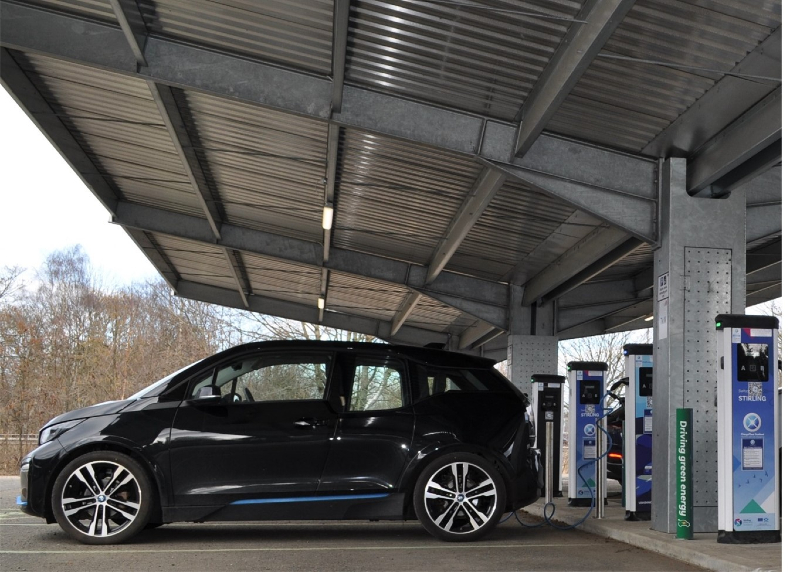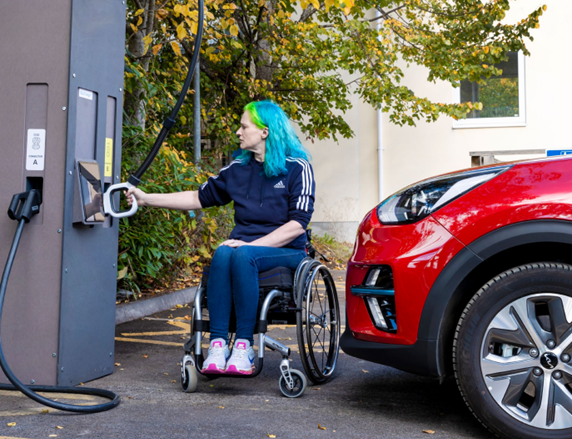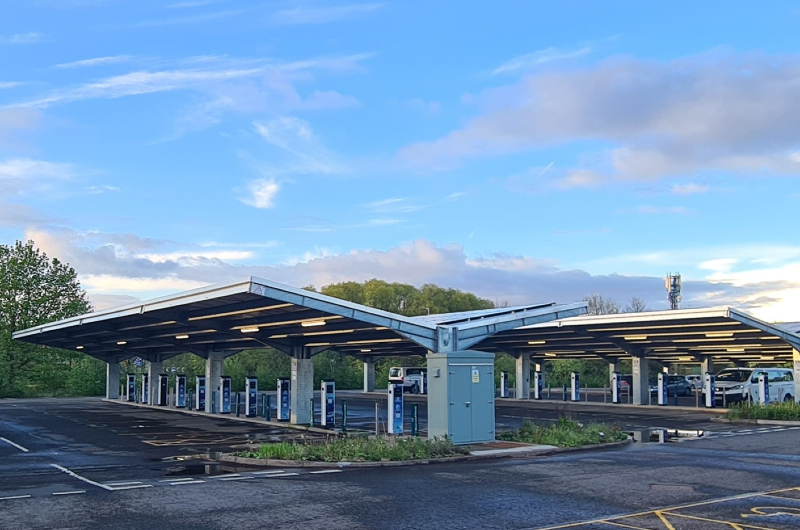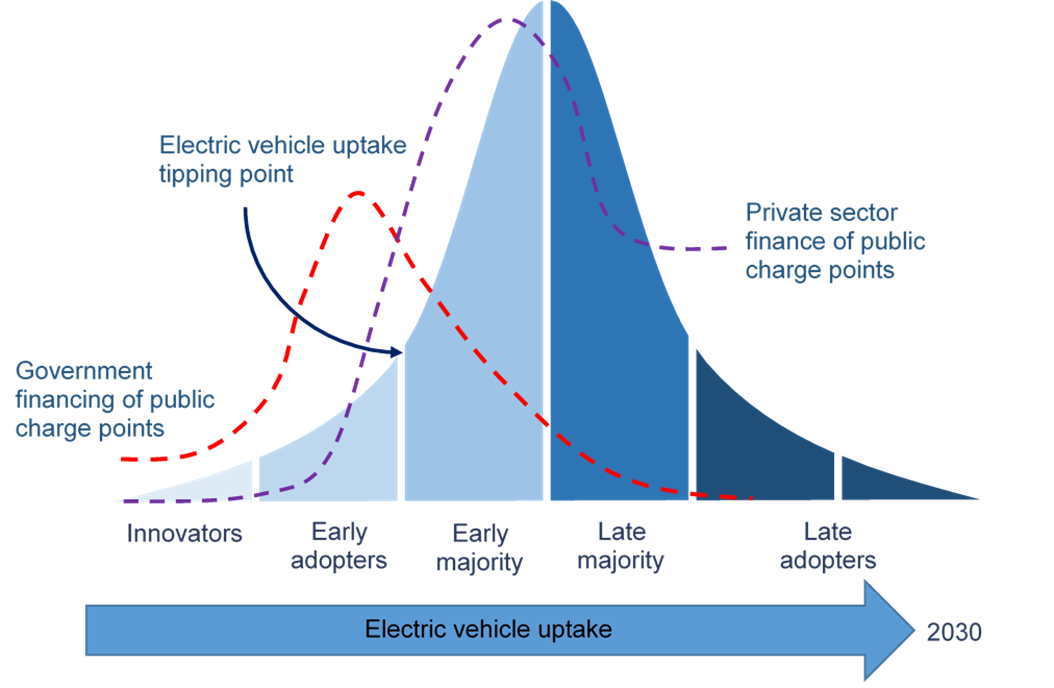Infra
The Vision – in context

Local communities, businesses and visitors have access to a well-designed, comprehensive and convenient network of public charge points, where these are needed.
Scotland’s public charging network comprises over 4,000 public charge points, and provides the greatest coverage of charge points per head of population than any other region of the UK outside of London. Over the coming years the network will need to continue to scale-up and grow at pace to meet the needs of a mass electric car and van fleet. It will be important that the right type of charging infrastructure is available in the right number and at the right locations across all areas of Scotland where it is required – making charging as convenient and reliable as possible to meet the needs of local communities, businesses and visitors.
The public electric vehicle charging network works for everyone regardless of age, health, income or other needs.
Using charge points needs to be simple, safe and affordable for everyone. This covers a broad number of themes, ranging from the physical location and design of areas for charging vehicles as well as the characteristics of the charge points themselves so that they are easy to use. It also includes providing simple, intuitive methods of access and payment across different charge point providers, catering for the needs of different users; whether cars or vans, businesses or members of the public.

As the network continues to grow, so too will opportunities for deployment of innovative solutions, tailored to the needs of different groups. Equally, for the charging network to grow and deliver a high quality user experience, owners of charge points, including public sector organisations, will have policies to recover costs to enable competition and investment. This well help to support a well maintained and sustainable network that is delivering best value for all consumers.

Scotland has attracted private investment to grow and sustain the public electric vehicle charging network.
Growing Scotland’s public charging network at scale and pace to meet the needs of an ever-growing number of electric vehicles will require significant levels of private investment. This investment must happen across all segments of the public charging market and in all parts of Scotland where public charging is needed – whether that is for slower powered destination or on-street chargers, or for higher powered journey charging. In the short- to medium-term there will be a need for continued public funding to enable this transition to happen, with intervention focused on areas of the public charging network where private investment on its own is unviable.

Scotland is already seeing increasing investment from private Charge Point Operators. It will be important that conditions are optimal to attract further investment and local authorities will have a key role to play in this through partnership working to identify local and regional charging needs as well as delivering efficiencies and economies of scale.

The public charging network is powered by clean, renewable energy and drivers benefit from advancements in energy storage, smart tariffs and network design.
The Scottish Government’s draft Energy Strategy and Just Transition Plan sets out the vision that, by 2045, Scotland will have a flourishing, climate friendly energy system that delivers affordable, resilient and clean energy supplies for Scotland’s households, communities and businesses. It highlights that renewable electricity (as well as hydrogen) will meet the vast majority of future transport energy needs, and the transport sector will also have a significant role to play in providing energy storage and flexibility through vehicle to grid and reuse of batteries. It recognises that greater integration of the transport and energy systems can help create a fairer, wealthier and greener Scotland: a Scotland where low and zero emission transport is affordable and reliable.

With Scotland’s significant renewable energy potential, we want the public charging network to deliver clean, green electricity to the many thousands of vehicles it will need to support in the future. Equally, to enable timely and cost-effective planning and delivery of public charge points, there are opportunities to harness the expertise of Scotland’s electricity network companies to make best use of electricity infrastructure, avoid unnecessary cost and embrace innovative solutions. Aligned to the principles of a just transition, this could also provide the opportunity to make the costs of charging vehicles on the public network fairer through accessing cheaper off-peak electricity tariffs. In doing so, contributing towards a smart and flexible electricity network of the future.

People’s first choice wherever possible is active travel, shared or public transport with the location of electric vehicle charge points supporting those choices.
This aspect of the Vision aligns with wider national transport and planning policy; focused upon a shift towards increased levels of active travel and greater use of public and shared transport, as well as travelling less and staying local. To enable a healthier, fairer and greener Scotland, the Sustainable Travel Hierarchy is clear that we need a radical shift towards more sustainable forms of travel. Reducing dependency on cars is a key element of this, as reflected in the Scottish Government‘s route map to achieve a 20 percent reduction in car kilometres by 2030.

A one-size-fits-all approach to integrating the public charging network into the wider sustainable transport system will not be feasible across Scotland; as there will be a higher dependency on car use in some areas, particularly in rural settings. The location of charge points can shorten car journeys and reduce dependency on privately owned vehicles; by providing people with greater opportunities to take alternative and more sustainable forms of travel, such as car clubs, buses, trains as well as enabling onward journeys by cycling, wheeling, scooting or walking. They can also support sustainable approaches to the transit of goods and services in vans, including last mile delivery. Importantly, a public charging network that is fit for the future, needs to ensure that the physical location of charge points does not impede other users of pavements and roads including pedestrians and cyclists.



